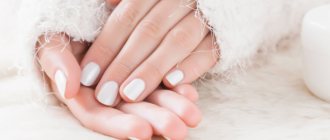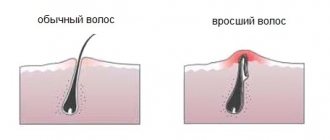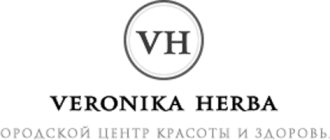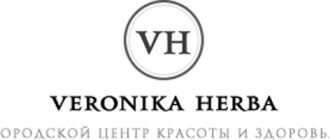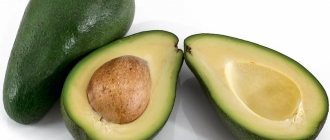For many girls, gel polish has become the ideal solution in search of a beautiful and durable coating. The reasonable price (both when creating a manicure at home and in the salon) has made shellacs the most sought-after and popular product in the nail industry. However, not everyone is ready to part with classic varnishes. The reason for this is an allergy that manifests itself both to the gel polish itself and to preparations for its application, removal, and a reaction to polymerization lamps. Today we will look in detail at the reasons for this phenomenon, tell you how to deal with it, and also give advice on how to remain a fan of gel polishes even if unpleasant symptoms appear.
Causes
A similar allergic reaction can occur both in nail art specialists who are forced to work with reagents for a long time, and in women who decide to apply this coating to their nails. Irritation may not appear immediately, because there are allergens that tend to accumulate in the body. Their intolerance gradually develops, and this process can drag on for several weeks or months.
It is noteworthy that the role of an allergen can be: UV radiation (photodermatitis) or any substance included in the component composition of shellac:
- Methacrylate isobornyl.
- Butyl acetate.
- Phenylketone.
- Hectorite.
- Diacetone alcohol.
- Photoinitiator.
- Film former.
- Thinners.
- Lemon acid.
- Phosphoric acid.
It has been scientifically proven that the most harmful chemical is methacrylate. It is so dangerous that in many countries there is a ban on the sale and use of any products containing this substance.
It cannot be argued that the only cause of an allergy to shellac is individual intolerance to derivatives of formaldehyde, camphor or toluene. There have been cases when an allergic reaction appeared due to weak immunity (after a long illness or surgery). There may not be an allergy to shellac, but there is an allergy to the product used to remove it. A striking example of this is acetone.
How to avoid allergies to gel polishes and alternative ways to decorate your nails with permanent coatings.
From the experience of using gel polishes in different countries, it has been noted that most often an allergic reaction occurs in women with sensitive and/or dry skin. Therefore, preparation for wearing CND shellacs should begin with the use of care products that reduce sensitivity and increase the level of hydration and nutrition of the epidermis.
Such a popular solution as taking a break from wearing a coating in the case of an allergy to gel polish will not work. Once formed in the body, antibodies to a particular irritant remain in it forever. Repeatedly “stepping on the same rake”, you risk getting allergic manifestations in an even more pronounced and severe form.
How to reduce the risk of possible allergies?
In addition to the above, follow these recommendations:
I. If you have never had an allergy to gel polish before:
- use only high-quality and reliable drugs of a higher price category, purchasing them directly from representatives of a particular brand;
- When performing a manicure, trust professionals who have been trained in working with gel polishes and all manicure and pedicure techniques;
- choose gel polishes that require minimal polymerization time and lamps that dry shellac as quickly as possible;
- a few days before the manicure, prepare your hands and nails (spa treatments using brands specializing in this type of care are welcome);
- after performing a manicure, be sure to apply oil or cream to the skin and cuticles;
- alternate coatings, not forgetting to take courses of treatment and improvement of nails and skin between changes in design;
- If there are problems with the health of the skin or nails, first eliminate them, without the risk of aggravating them by applying a permanent coating.
II. To prevent recurrence:
- immediately after treatment, do not cover your nails with classic varnish, let them recover;
- read the composition of gel polishes before applying them to your nails;
- use products for application and removal of the same brand, giving preference to professional brands (with the least number of responses about allergies to removers, bases and primers);
- when getting a manicure in a salon, pay attention to the cleanliness of the workplace, whether the tools are disinfected, as well as the nature of storage of materials and preparations;
- if you are a master: do not neglect gloves and a mask, and after each client, wipe the bottles with an alcohol solution and ventilate the room;
- For clients, it is important to wash their hands with soap after a manicure and only then apply care products.
III. Recommendations for allergy sufferers:
Regardless of whether you are creating a design for yourself or for a client, following a few simple rules will allow you to be less likely to experience allergies to gel polish and auxiliary liquids and materials:
- If you wear gloves while designing, don't use one pair for more than one client;
- Always wear a mask. And don’t forget about protective glasses or a screen to protect your eyes and facial skin from dust settling and accidental splashes from liquids used in gel polish manicures;
- Protect your skin in every way - it is best if you wear a uniform other than short sleeves;
- Your craftsman's arsenal simply must include a good, powerful vacuum cleaner that will not allow sawdust to settle on your skin;
- When removing the dispersion layer from gel polish, base or top, do not skimp by spreading the sticky layer over all fingers with one napkin. It is better to spend more supplies than medications to treat the symptoms of an allergic reaction.
Symptoms
Any component of shellac can take on the function of an allergen. Some manifest themselves immediately, others after a few hours. And still others - after several weeks or even months. Manifestations of allergies can be dermatological and respiratory. Primary symptoms:
- skin hyperemia;
- swelling of the fingers;
- blisters around the nail bed;
- severe itching, redness of the fingertips.
If no action is taken when the first signs are detected, the process will develop. This is fraught with the appearance of various complications in the form of a nail that peels off from the bed, or a rash that completely covers the hands. Dermatological manifestations cannot go unnoticed, because itching and swelling will not allow you to solve everyday problems.
Respiratory manifestations
The possibility of damage to elements of the respiratory system cannot be ruled out. And especially dangerous in this regard is isobranil methacrylate, the vapors of which “do not add health” even to healthy people. Signs indicating respiratory irritation:
- swelling of the mucous membranes;
- runny nose;
- lacrimation;
- cough with mucus;
- sneezing;
- attack of suffocation.
To avoid negative consequences, it makes sense to call a doctor if the symptoms are pronounced and there is a real threat to a person’s life.
Low-quality antiseptics
There are two types of antiseptics:
- Medical antiseptics
- Antiseptics (sanitizers) produced by cosmetic companies, or the same companies that produce gel polishes.
If you want to minimize the possibility of allergies, and at the same time disinfect the skin of your hands and gloves as much as possible, use medical antiseptics. These antiseptics meet all necessary standards. And the main thing is that they practically do not cause allergies.
Cosmetic antiseptics (aka sanitizers) cannot protect the skin as well as medical ones, but this is not the main thing. The main thing is that cosmetic antiseptics contain additives in the form of aromatic fragrances (mango, vanilla, aloe), as well as dyes. These same fragrances and dyes can often cause allergies.
Diagnostics
If you notice symptoms indicating an allergy, it is recommended to consult an allergist. At the initial stage of diagnosis, a visual examination is performed, because rash, redness, and swelling are the basis for prescribing treatment. If the patient consults a doctor after all external manifestations of the allergy have disappeared, then laboratory tests are performed to make a correct diagnosis:
- immunoenzyme;
- calculated (the leukoformula is calculated and the percentage of cells is determined);
- radioallergosorbent.
To identify the real allergen, sometimes a whole series of tests is required, because the cause of the allergy may not be shellac, but some food or material, for example, latex.
Skin tests
Also classified as tests. Their essence is as follows: a drug containing the suspected allergen is applied to the forearm or other area of the skin. The presence of an allergic reaction during such an experiment will be indicated by direct signs: redness, swelling, itching, the appearance of pimples or blisters (rash). Before the test, you should not take allergy medications because they will distort the results, which will not allow you to prescribe optimal therapy.
Preparing for the study
Laboratory testing uses the patient's venous blood for analysis. To increase the reliability of the result, it is recommended:
- take blood samples in the morning from 8:00 to 10:00;
- submit material for research on an empty stomach;
- on the eve of the study, reduce physical, sports and emotional stress, eliminate smoking and alcohol.
It is allowed to drink a small amount of clean drinking water without gas.
Treatment
If signs of an allergy appear and it is established for certain that the irritation was caused by shellac, the patient is advised to strictly follow all the doctor’s instructions. Self-medication is not the best way to eliminate the problem, since some drugs have side effects. Also, there are medications that cannot eliminate allergies due to their ineffectiveness.
Glucocorticosteroid drugs
Topical glucocorticosteroids are intended for external use. That is, they treat areas where the external manifestations of allergies are most pronounced. As a rule, these are ointments and gels containing:
- antiseptics (“Chlorhexidine”);
- anesthetics (“Lidocaine”);
- antibacterial components (Neomycin, Levomekol);
- regenerating complexes (“Panthenol”, “Bepanten”, “Rescuer”).
Topical glucocorticosteroids are prescribed by a doctor and used in accordance with the instructions.
The most popular drugs:
- "Aurobin";
- "Afloderm";
- "Advantan";
- "Mometasone";
- "Triderm";
- "Sibikort";
- "Elokom".
Antihistamines
There are antihistamines intended for external or internal use. They are prescribed when allergy symptoms are mild and there are no prerequisites for their intensification.
The patient takes the pills for a maximum of one week until symptoms are completely eliminated. Recommended dose – 1 piece/day:
- "Claritin";
- "Zodak";
- "Loratadine";
- "Cetrin";
- "Tavigil";
- "Zyrtec";
- "Cetirizine."
If a fungal infection is detected, the patient may be recommended to take antifungal agents presented in the form of ointment, gel, lotion or cream (“Clotrimazole”). Non-hormonal drugs presented in drop format are highly effective due to the fact that they “get to work” faster than other drugs. These are “Gistan” and “Fenistil”.
Folk remedies
Before starting treatment, it is necessary to completely remove the decorative coating from the nail plates. There should be no shellac residue on your nails and fingers. If you don’t want to prepare decoctions and infusions, you can make a compress with Burov’s liquid, which has an astringent effect and anti-inflammatory properties. The compress is made to eliminate the rash.
To reduce itching, it is recommended to prepare herbal tea consisting of dried chamomile and sage flowers, taken 1 tsp each. Dry raw materials are poured with a glass of boiling water and left to infuse for 15 minutes. The decoction should be taken for 3-5 days, a glass twice a day.
Baths consisting of decoctions of medicinal plants will help against itching, redness, peeling of the skin and swelling:
- Pour 3 liters of boiling water over 300 g of nettle leaves and let it brew for 20 minutes. Baths should be done 3 times a day, for a week. The algorithm of actions is simple: dip your hands in a warm broth and hold for 15 minutes.
- First, a mixture is prepared consisting of calendula flowers, string and oak bark, taken in equal proportions. Take 4 tbsp. l. mixture, pour a liter of boiling water, leave for half an hour to infuse. Next, proceed according to the above scheme.
Elimination
The disease is easier to prevent. Therefore, if an allergy to shellac is detected, it is necessary to completely eliminate contact with the allergen. This means that you need to look for an alternative solution or abandon the decorative coating altogether. Before giving preference to varnish, gel polish or stickers, it is recommended to completely neutralize all the negative consequences of using shellac.
What can cause allergies: list of allergens
Any chemical composition used in manicure and nail design can provoke an allergic reaction. Such means include:
- Acrylic powder and liquid
- Gel system for extensions
- Acrylatic
- Top coat, base coat
- Degreaser, dehydrator
- Primer, bond – acidic and acid-free
- Gel polish
- Acid or alkaline cuticle remover for unedged manicure
- Products for removing extended nails and gel polish
- Glue for fixing tips
- Antiseptics and disinfectant solutions for treating hands and working surfaces of the cabin.
Methacrylate is a synthetic component found in acrylic, extension gel and gel polish. It is this that most often leads to allergies when extending and covering nails with gel polish.
Methacrylate is one of the components of varnishes, gel polishes and gels, mainly from the low price segment. If such means are used rarely, then there is no danger. Otherwise, methacrylate gradually accumulates in the nail plates. After creating a certain concentration, a violent allergic reaction develops. Please note that the chemical also often causes the following pathologies:
- paronychia - inflammation of the skin around the nail;
- onycholysis - separation of the plate from the nail bed.
In addition to methacrylate, in almost any product that is used during procedures, there are at least 3 components that can provoke allergies. Remember the most aggressive ones:
- Toluene
- Formaldehyde derivatives
- Acetophenone
- Butyl acetate
- Nickel balls used in anti-thickening varnish bottles
- Phosphoric acid
- Nitrocellulose
- Rosin
- Nitrocellulose
- Diacetone alcohol
The more they come into contact with the nail, the higher the likelihood of irritation and inflammation of the periungual ridges. If you are predisposed to allergies, you should resort to a three-phase manicure, when the plate is protected by a colored layer.
Health hazards of gel polish and its components
Allergy to shellac in pregnant women
Pregnancy is not a reason to let yourself go. And if a pregnant woman wants to get a good pedicure/manicure, then she can go to a salon whose specialists work with high-quality materials. It should be noted that staying in a room completely saturated with “chemical” odors is not the best solution for an expectant mother who is in the early or late stages of pregnancy. This may cause allergies or an attack of nausea.
When deciding on applying a decorative coating to the nail plates, it is worth considering that shellac can be “dangerous” and “safe”. Formaldehyde contained in cheap materials is potentially dangerous for the unborn child; toluene can be safely classified as a narcotic; camphor oil causes uterine tone.
But that's not all. The UV lamp is used for its intended purpose for no more than one and a half years. Then it loses its performance characteristics, which causes the drying time to increase significantly. Long-term exposure to ultraviolet radiation is harmful even for healthy people with strong immunity. It is recommended to refrain from visiting a nail salon unless you are confident in the integrity of its employees.
Laboratory diagnostics before vaccination against COVID-19
Immunoglobulin tests are a mandatory examination before vaccination in the presence of drug allergies. The study, as prescribed by a doctor or at your own request, is carried out at the AMC-Medionika clinic in Moscow and is the key to a successful outcome of subsequent immunization. The clinic guarantees:
- reliability of the result;
- speed of obtaining indicators;
- no queues;
- affordable prices for research.
If you wish, you can get advice from an experienced specialist on deciphering the received data. You will be received by highly qualified specialists with many years of experience.
Check your immune status before vaccination to eliminate any risks after vaccination against coronavirus, and make an informed decision about the advisability of vaccination at this stage.
Preventive measures
To minimize the risk of an allergy to shellac, you should take into account the advice of experienced cosmetologists:
- It is not recommended to use products of dubious quality produced under unknown brands.
- Shellac cannot be applied continuously, as there must be rest periods lasting up to several weeks. At this time, you can use regular colored varnishes applied to nails coated with “smart enamel” or medicinal varnish. An excellent solution is nail stickers.
- In the intervals between shellacs, you should provide your nails with intensive care.
- If signs of an allergy appear after applying shellac, the coating must be removed. The second attempt should be postponed for a month.
- The technology for making shellac is not simple. And even if you have the necessary tools and products, it is better to go to a good nail salon.
The number of brands with shellac in their product line is growing. But not every coating contains hypoallergenic substances, because every manufacturer is interested in reducing the cost of production.
To minimize the likelihood of allergies, you need to use original shellac produced by CND. It does not contain dibutyl phthalate, toluene and formaldehyde derivatives. Therefore, it can be used by pregnant women and people suffering from certain diseases, such as diabetes.
Need good ventilation and airing of the office
The fumes from liquid gel polish are toxic. No, this is not a chemical weapon, but if you are a master and work with gel polish for 4-5 hours a day, then without proper ventilation of the room, you may well inhale gel polish vapors.
I am already silent about those craftsmen who are forced to work in rooms with poor or no ventilation at all. It is especially difficult to ventilate for those craftsmen who work from home.
Don't want to breathe chemicals? Take care of the hood and constantly ventilate the office.
And ALWAYS work in a disposable mask - it is this that saves my nose and throat every time, especially when removing gel polish with a machine.
The picture is further aggravated by all sorts of frills and curtains; they shouldn’t be in the office! Over the course of a couple of days of intensive work, so much dust accumulates on them that you can’t even imagine. And as you know, dust is a strong allergen, and even if the dust contains shavings of gel polishes and sawdust from nails.
As a result of all this seemingly trifle, sooner or later an allergic reaction occurs in the client, but more often in nail technicians.
What are the analogues of shellac?
Any nail coating contains chemicals, and each of them can act as an allergen. To prevent negative consequences, you should be careful when choosing manicure products. Preference should be given to products manufactured under well-known brands.
Chinese counterfeits can pose a real health hazard. In some cases, an alternative to shellac can be ordinary “long-acting” nail polish (one that lasts on the nails for at least a week). The best hypoallergenic gel polishes are:
- Gelish Harmony;
- RuNail;
- Jessica Gelation;
- Gelcolor;
- Schellac.
If an allergic reaction is provoked by UV radiation, then it is worth trying coatings that do not require drying under ultraviolet light: GelLac, Vinilux.
Dangerous and safe gel polishes: is there a 100% chance of avoiding allergies?
Are there gel polishes that do not cause an allergic reaction? A manicure like this is kind of a lottery. Many girls have never encountered the unpleasant side of gel polishes. If you have previously had an unpleasant experience with varnishes and HDSL, then you should carefully approach the choice of safe gel polish.
There are no special studies on this topic, but the people's jury noted cases of allergies to Blueskу and other Chinese gel polishes, although the compositions of the products on their packaging are similar to shellac from SND. Masura and Tnl brand coatings were not suitable for a certain percentage of the audience. The fewest cases were recorded in relation to coatings of the brands “Option”, NeoNail, Luxio, CND Shellac. There are also very good reviews from long-time practicing manicurists about the rubber base for allergy sufferers of the Grattol brand (IQ Rubber Base Gel).
All of the above was most often noted in cases of contact (skin) allergies. Respiratory manifestation of a negative reaction of the body is possible for both expensive and cheap brands.
What explains the popularity of Shellac coating?
Shellac is a nail coating that combines two bases - gel and varnish.
Due to this, the manicure is not only bright, modern, but also sustainable.
Those who have already taken advantage of improving the appearance of their nails using Shellac highlight several main advantages of this nail design:
- Durability of the coating. Properly applied shellac will not change color, crack or fall off for at least two weeks.
Strengthening nails. Before the procedure, the nails and cuticles themselves are processed, but to apply gel polish there is no need to remove the top layer of the nail plate; it is only lightly polished. Such care and subsequent application of shellac can strengthen the nail plate. Shellac gives nails a shine that does not change under the influence of water, ultraviolet radiation, or cosmetics. Gel polish dries very quickly and therefore you don’t have to spend a lot of time on a manicure session. Variety of shades. Today, elite salons offer a choice of more than 200 shades of Shellac, which are perfect for both young ladies and women who follow a certain working style. If necessary, you can remove the coating yourself. To do this, you need to buy a special product for safe removal of gel polish in advance.
Shellac coating is done in beauty salons, but if you wish, you can learn how to professionally do a similar manicure at home.
Many girls use Shellac gel polish almost constantly and do not notice any negative aspects of this manicure.
But sometimes an allergy occurs to this coating, which manifests itself with very specific symptoms.
When such a problem arises, girls are primarily concerned with the question of whether it is necessary to completely abandon gel polish, and why an allergy to it occurs.
Delayed allergy – difficulty in diagnosis
The reaction to manicure may be delayed in time and appear after a few days or a week.
- The reason is the slow cumulative effect of exposure to toxins or allergens from varnish, acrylic or gel coating that penetrate the nails and the body several hours or days after the procedure.
- The second reason is long-term wearing of extended nails and gel polish manicure without breaks, from a month to a year. The absence of visible signs of allergic reactions to manicure (itching, irritation, redness of the skin) immediately after application initially excludes this cause. The first symptoms have appeared - it is worth considering it too.
Shellac composition
The gel contains the following substances:
- phenylketone, butyl acetate;
- phosphoric (citric) acid;
- alcohol solution of diacetone;
- methacrylate and hectorite;
- nitrocellulose.
Each of these components can cause an allergic effect on the body.
An interesting fact is that many countries have banned the use of cosmetic products that contain methacrylate. However, Shellac is still popular in many beauty salons.

